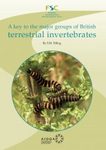About this book
The invertebrates that live in Britain's rivers, streams, lakes, ponds and wetlands are endlessly fascinating and hugely important in the ecology of fresh waters. Guide to Freshwater Invertebrates provides an introduction to their great diversity and the means to identify the many different types, from flatworms to beetles. A series of easy-to-follow keys, along with notes on ecology and distribution, allow identification of the more commonly encountered freshwater invertebrates occuring in Britain and Ireland, while 460 line drawings illustrate whole animals and the features of importance in distinguishing different groups. Identification is typically to family level, and beyond where this is straightforward to do so, with a bibliography of other keys and guides for those who want to pursue identification further.
With introductory notes on the classication of animals and the collection and preservation of specimens, as well as a detailed glossary, Guide to Freshwater Invertebrates is aimed at anyone interested in identifying freshwater invertebrate animals, from established naturalists and biologists to those new to the field. Written by staff from the Freshwater Biological Association, it is intended as a tribute to T.T. Macan, one of the 'founding fathers' of freshwater biology.
Note:
This is the second general guide to freshwater invertebrates, published by the FBA. To help you decide which of the two books is most appropriate for you, here are some notes on the differences between the two.
SP67, Guide to British Freshwater Macroinvertebrates for Biotic Assessment - This is a concise guide to the identification of macroinvertebrate families included in biotic assessment in the UK. It is short (80 pages) and concentrates upon those groups that are covered by biotic index approaches (including others where they may cause confusion). Identification is to family level, with approx. 130 endpoints. It uses a variety of identification methods, including dichotomous keys, pictorial guides and tables, depending on what is appropriate for each group. It is designed to be used for running waters (rivers and streams); although for most groups it can be used for still waters (lakes and ponds), it does not cover, other than superficially, the various crustaceans and particularly many of the Diptera that are still-water specialists.
(This book is aimed at those who need to identify freshwater macroinvertebrates for biotic assessment, particularly professionals and students, and assumes some familiarity with taxonomic terminology. Although it also serves as a short introduction to the identification of freshwater invertebrates, the FBA also publishes a more comprehensive introductory guide, SP68 Guide to Freshwater Invertebrates - see below.)
SP68, Guide to Freshwater Invertebrates - This larger, more comprehensive guide (216 pages), covers all freshwater invertebrates occurring in Britain and Ireland, in both running and still waters. It is almost entirely key-based to encourage confidence in the use of keys. Identification is typically to family level, but goes beyond this where it is straightforward to do so; smaller organisms are identified to phylum, subclass or order (for example, with rotifers, ostracods and fairy shrimps); many larger crustaceans and insects are taken to genus and even species level. While it includes the families covered by SP67, it also covers other freshwater organisms, and many groups are covered in more detail. For example, the crustacean key includes the various planktonic forms, there is a key to oligochaete families, notes on parasitic copepods, and a hugely expanded key to Diptera, including pupae. There are approx. 250 endpoints in total (for example, phylum, order, family, species), plus annotations that allow further division for many groups. There is also much extra information, on classification, invasive species, and the collection and preservation of specimens, as well as a detailed glossary and a brief introduction to the concept of biological recording. Finally, there is a table listing all the taxa covered and their relationships to each other. (This book is aimed at anyone interested in identifying freshwater invertebrates, from established naturalists and biologists to those new to the field.)
Both SP67 and SP68 include line-drawing illustrations and general tips on identification, as well as notes on typical habitat, to aid identification, and have a bibliography of other keys and guides for those wishing to take identification further.
Customer Reviews












































